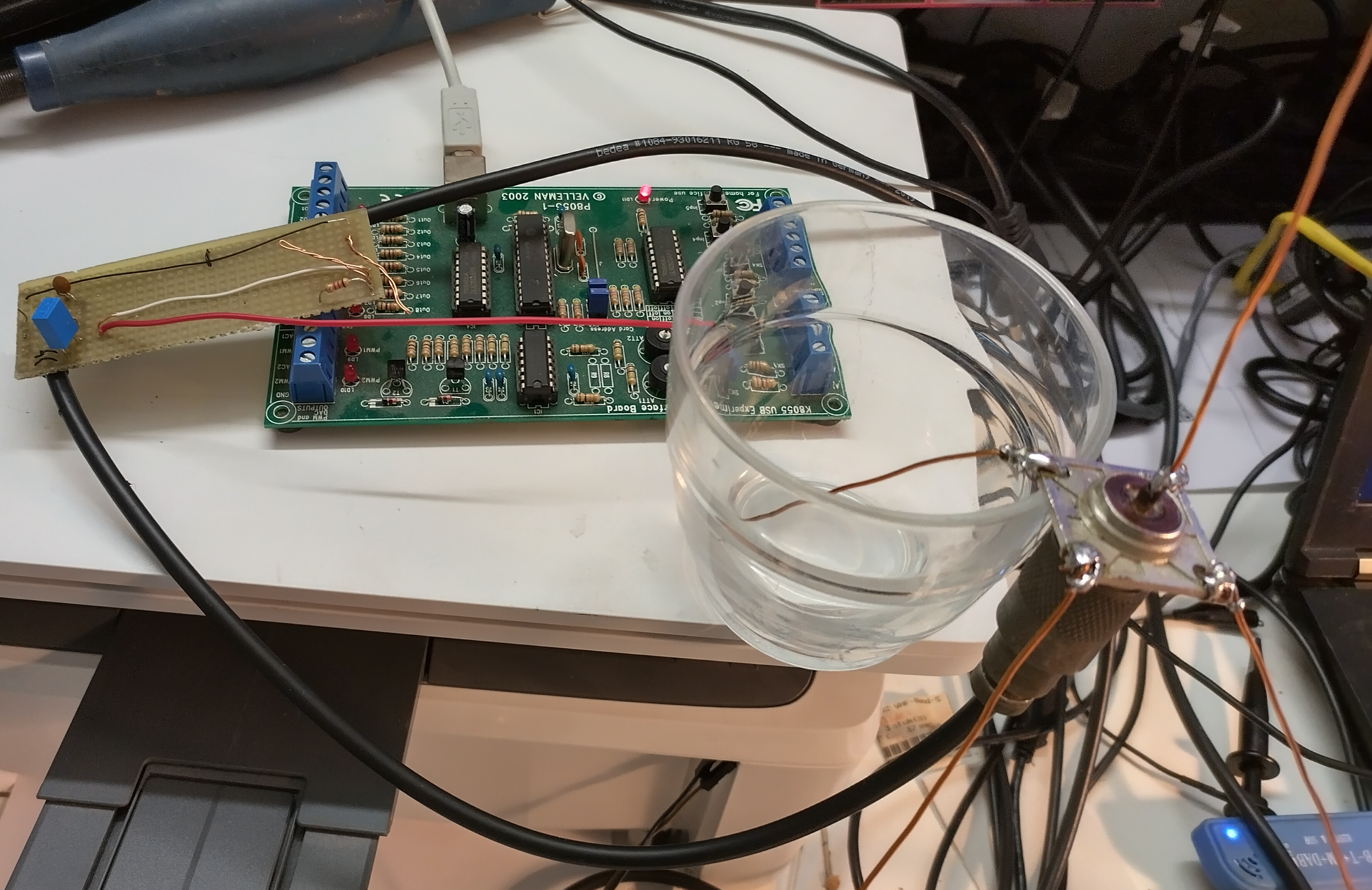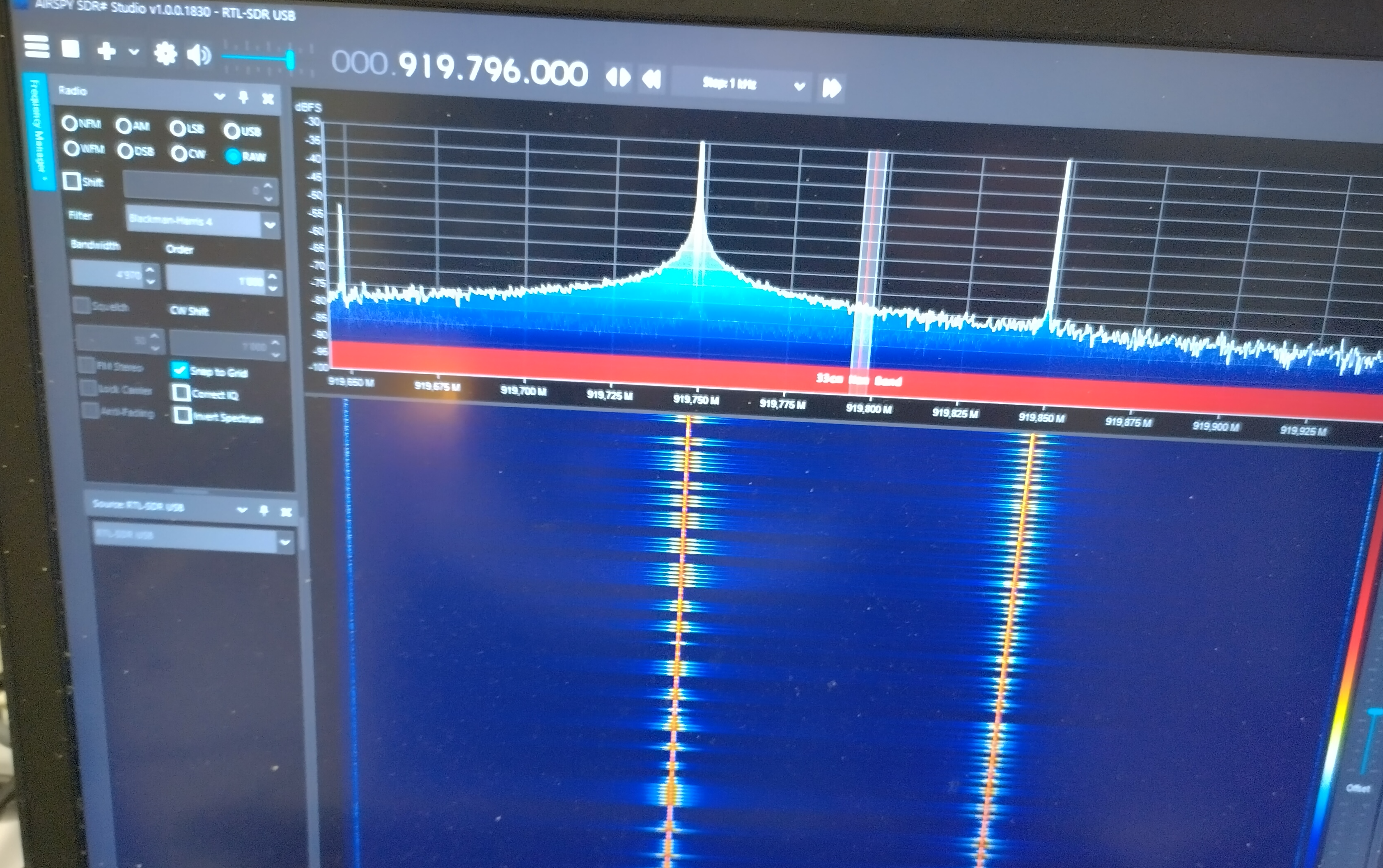Direct Antenna Modulation (or, DAM)
Direct Antenna Modulation (or its cousin, Near Field Direct Antenna Modulation) is something you don’t read much with HAM enthousiasts.
To understand DAM, you have to look up PIN diodes - PIN diodes can switch RF signals on or off directly at the antenna - a schematic is below. I tried this in the simulation below.
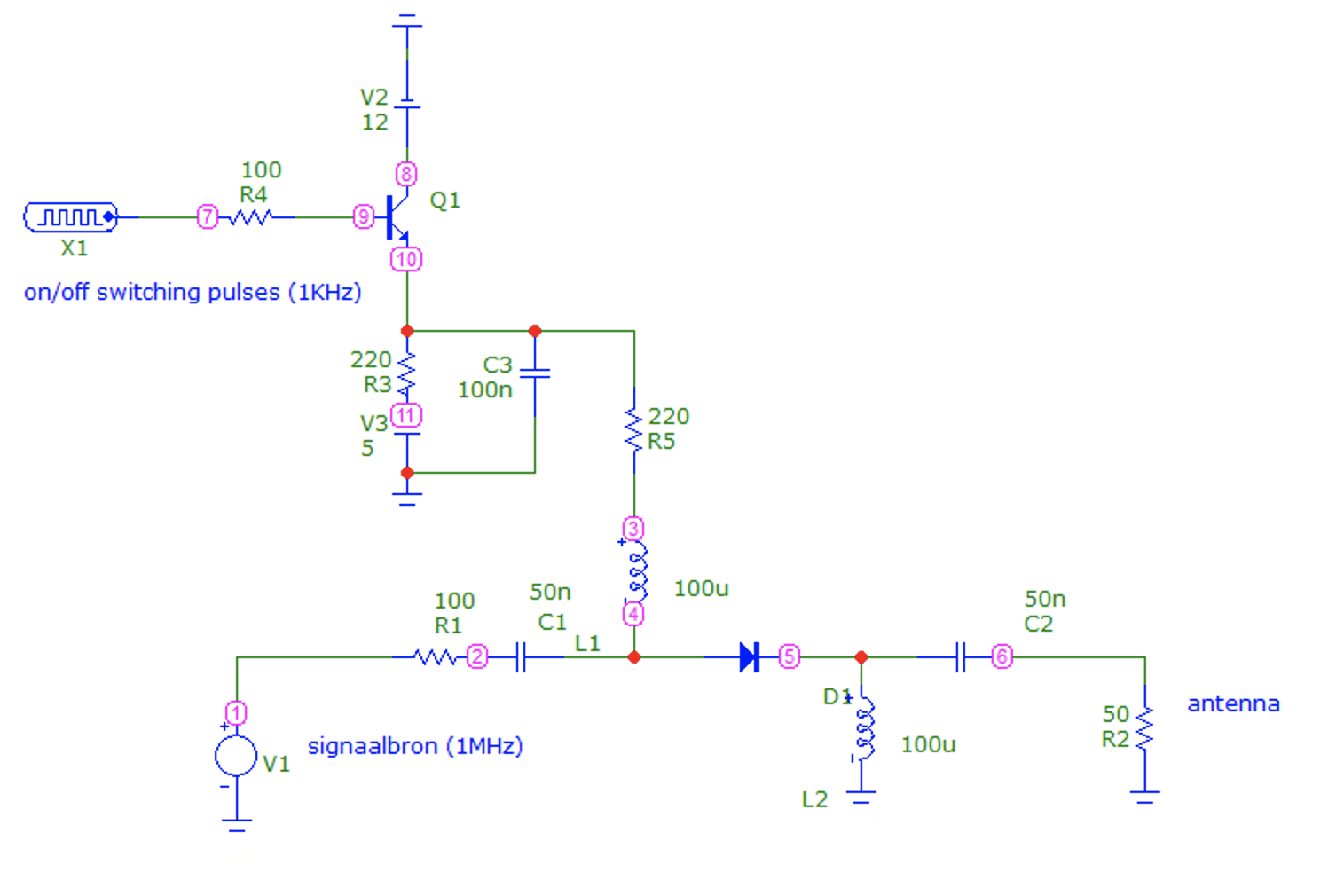
The result of the simulation is a 1MHz signal switched on and off by a pulse train of 500Hz by a PIN diode (type ‘BA582’) - A sort of morse code ‘modulation’.
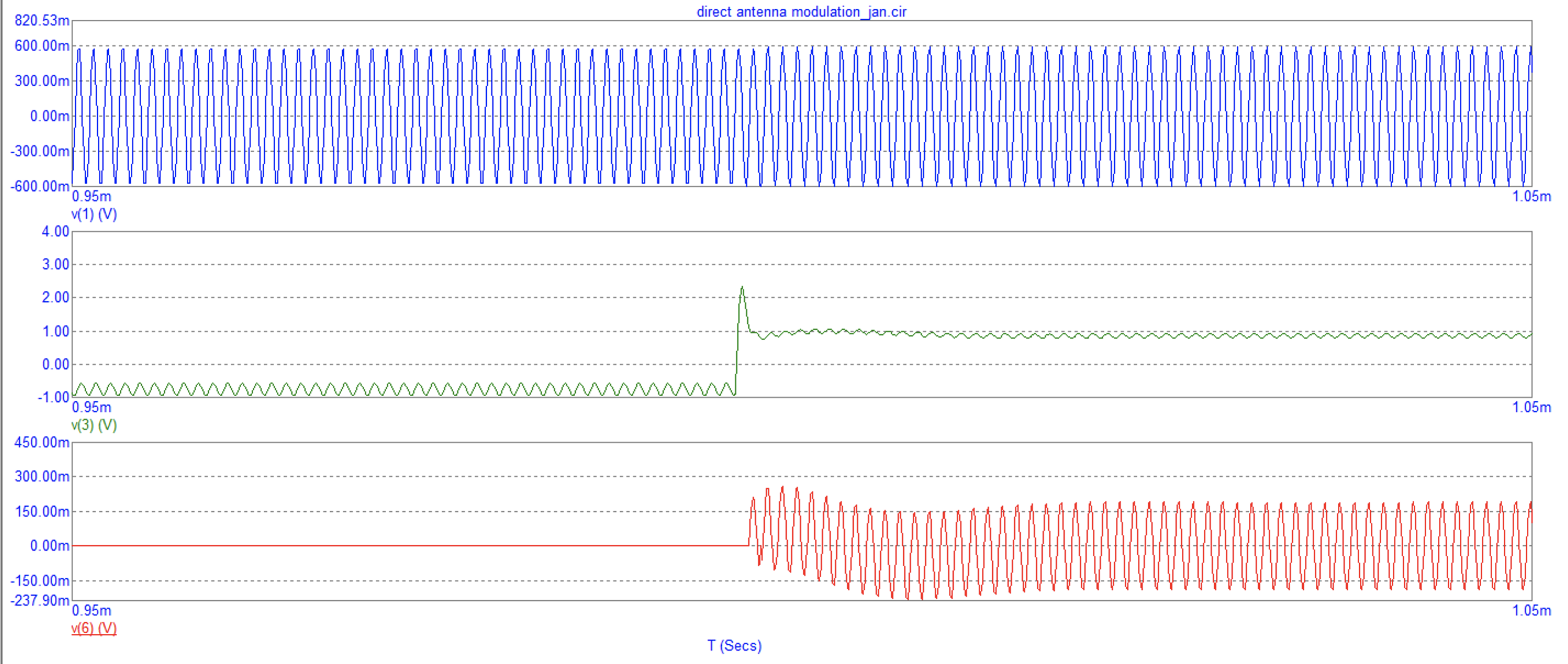
Another application of DAM is more practical, it is called Near Field Direct Antenna Modulation: You can modulate PSK on a signal directly on the antenna by keying the reflectors on a dipole. The main advantage is that the PSK can only be received in line with the dipole and its reflectors (the Z direction).
This is explained in the schematic below.
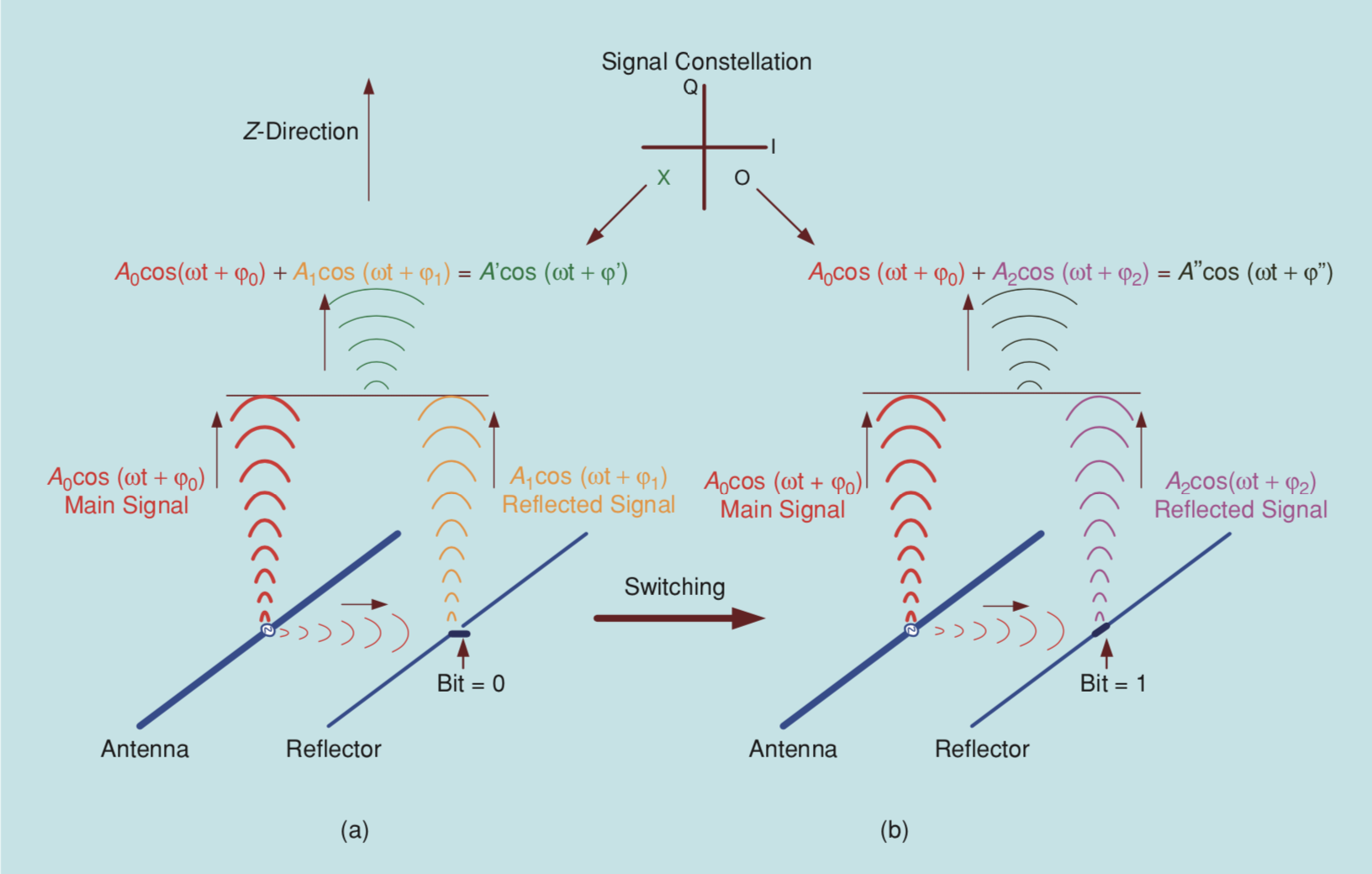
Picture from the cited paper, ‘Near Field Direct Antenna Modulation’ (2009)
I could not find the BA582 diode used in the simulation in my electronics store for my experiment
PIN diodes (aka. RF switches) are used mostly in the Gigahertz range. For my experiment, I bought the BAR63 PIN diode from Infineon on a 920MHz carrier. The datasheet specifies that that diode can be used from 300MHz and above.
The setup uses a PLUTO SDR that transits a 9200MHz signal. An Velleman K8055 is used to pulse the RF switch.
|
|
|
My experience with gigahertz range is very bad - it radiates even without antenna and the reason I didn’t try the Near-Field Direct Antenna Modulation any more.
